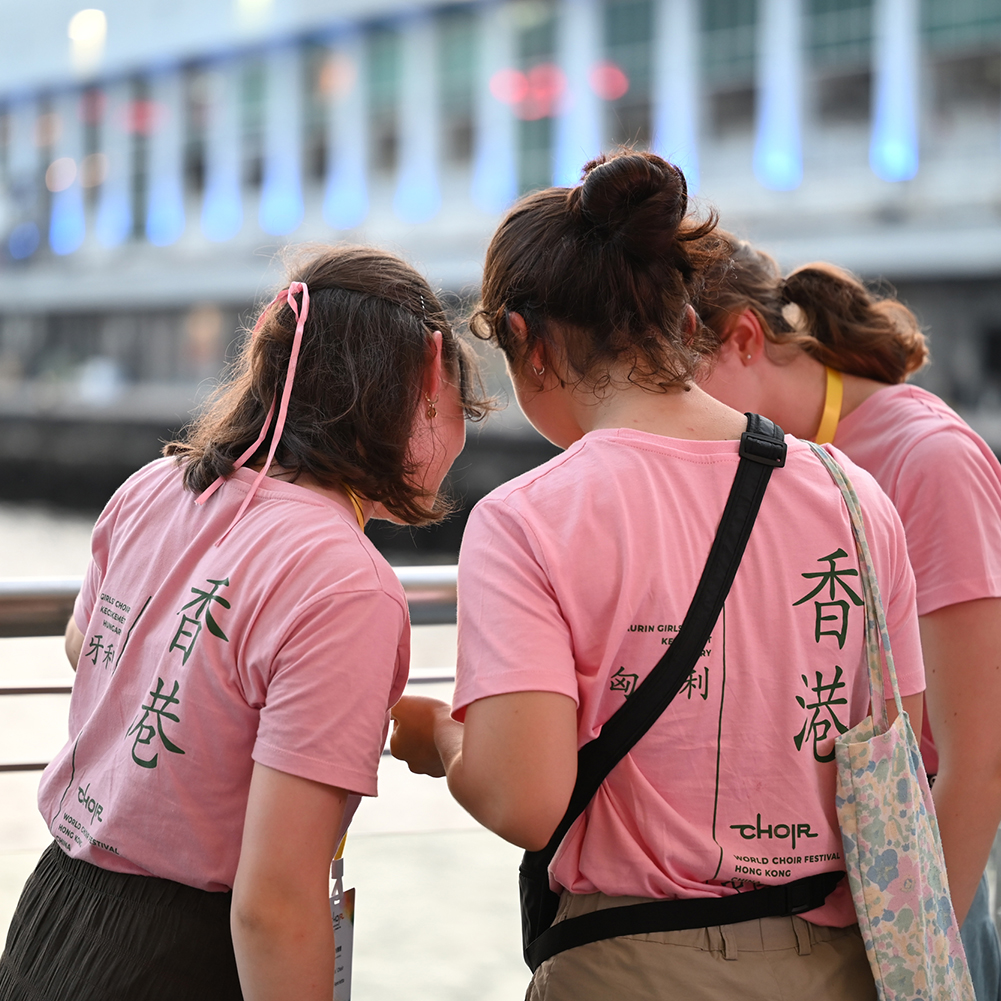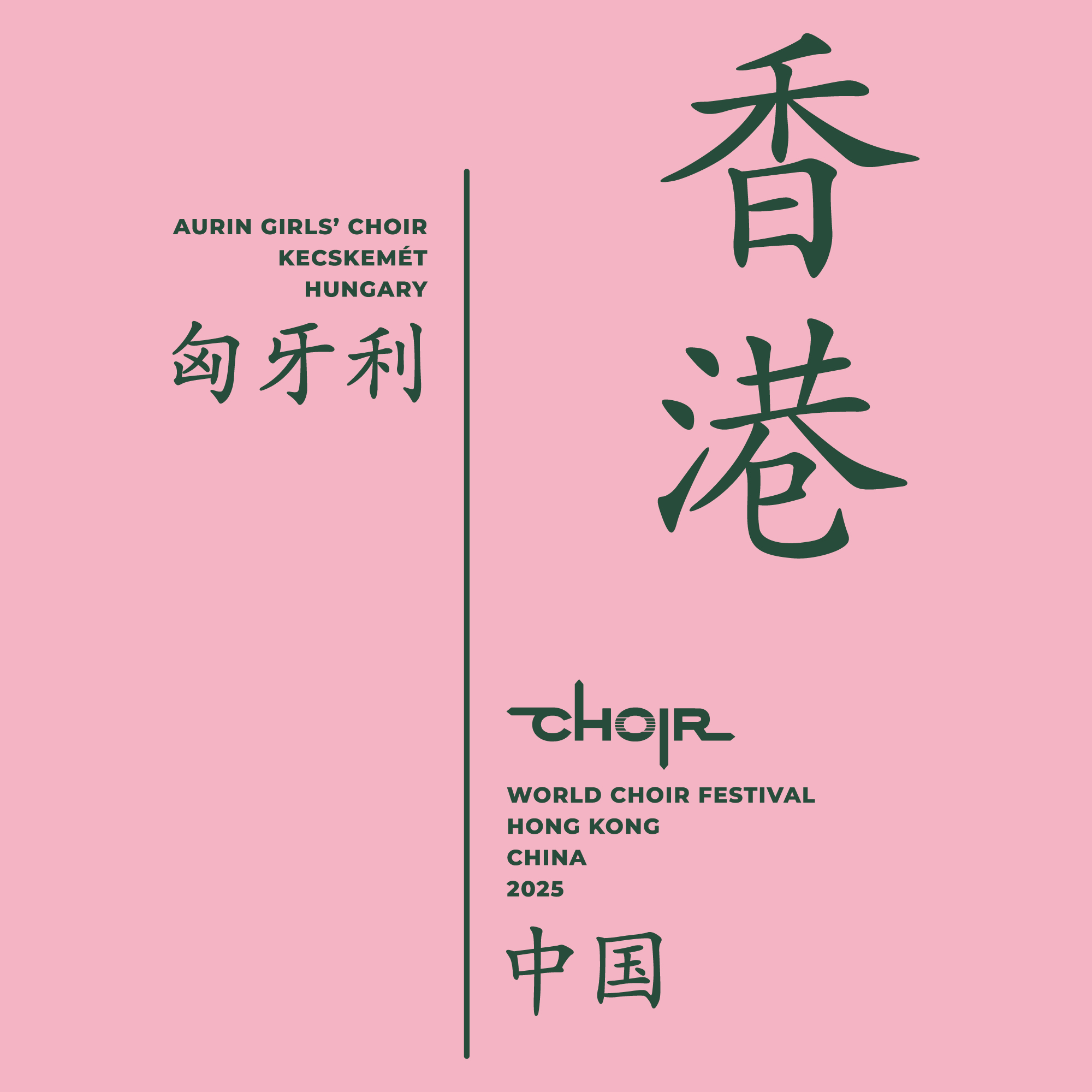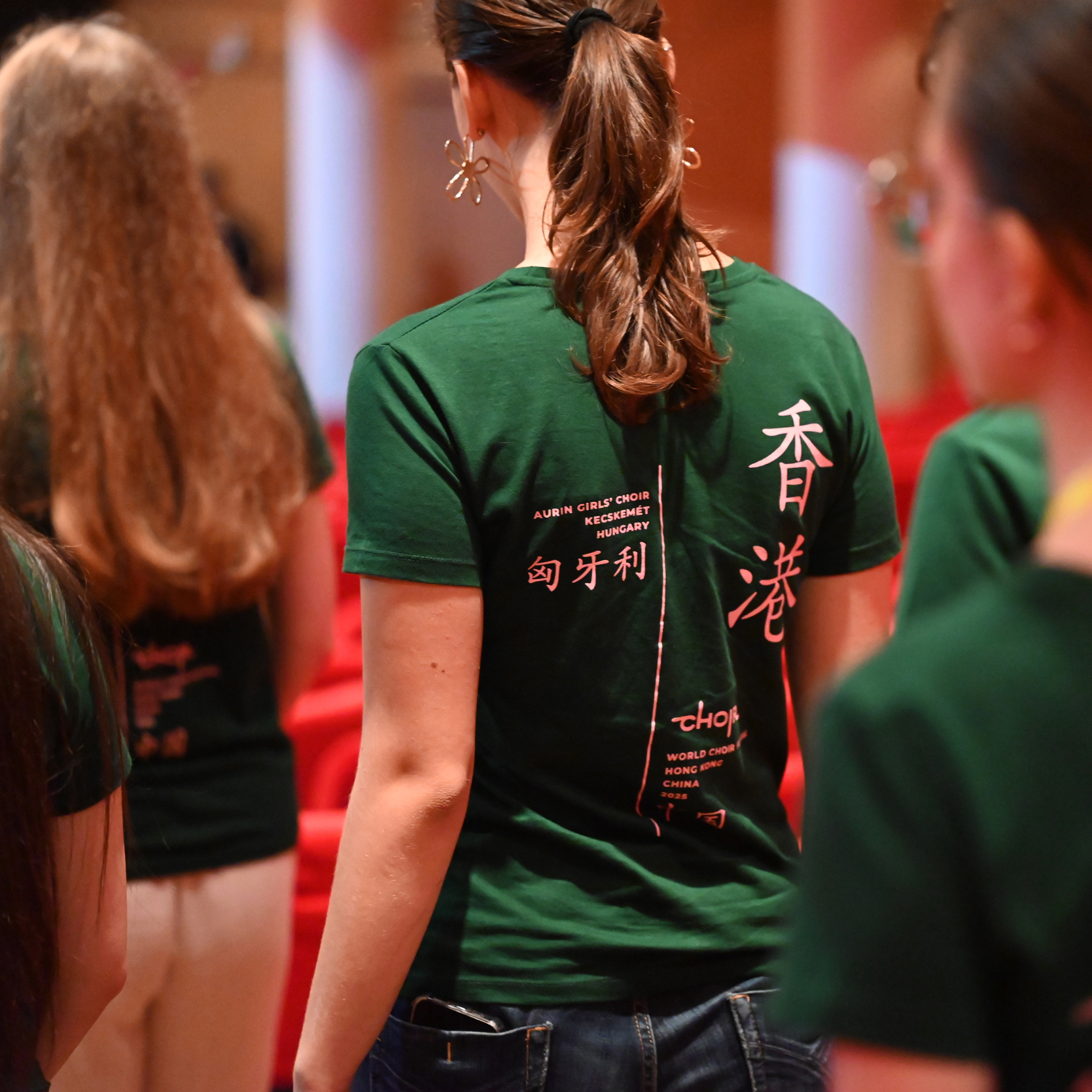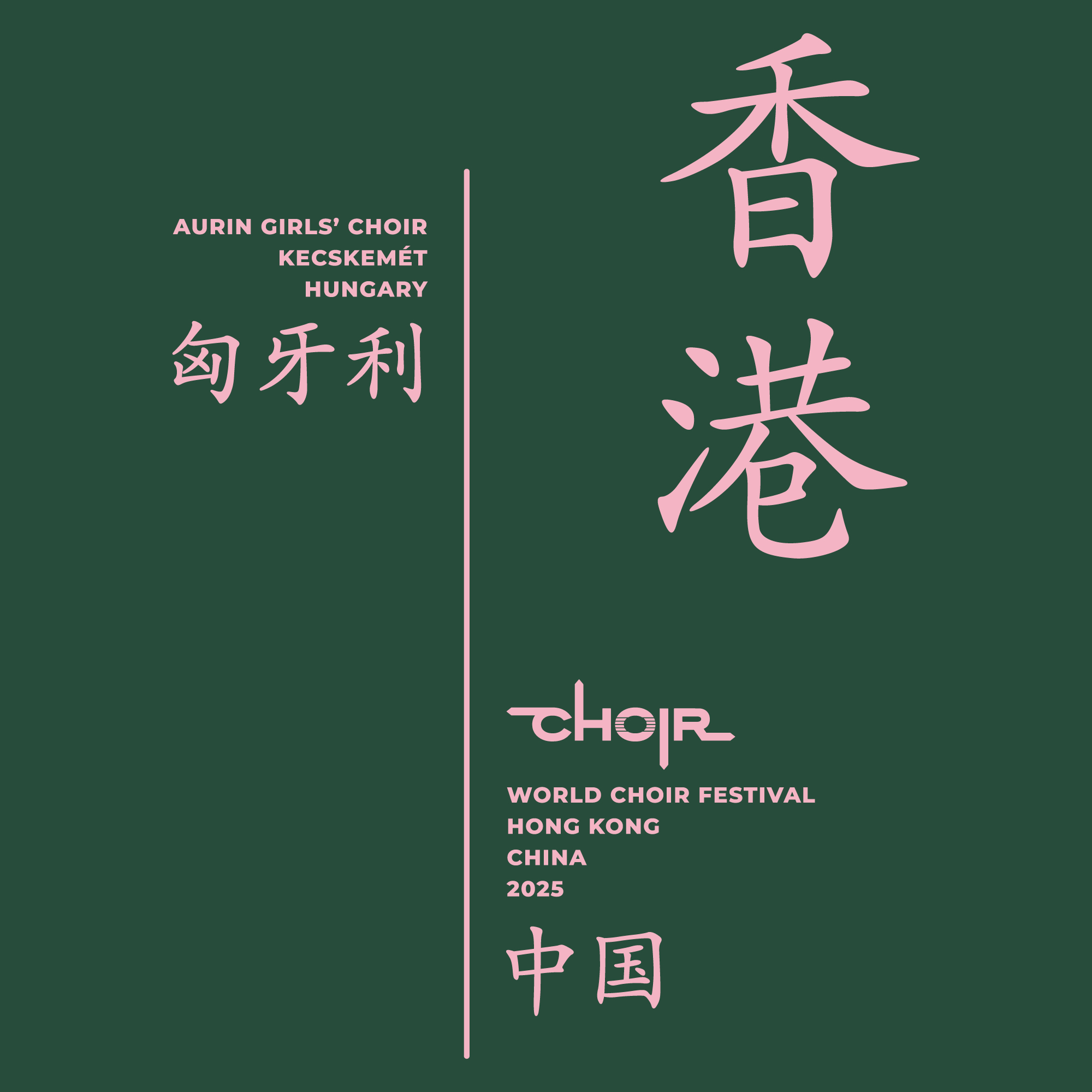What to wear on a tour, festival, or international stage?
Style meets purpose — across borders, spotlights, and cultural lines

So how do you dress with impact, respect, and style?
Let’s explore the practical, cultural, and creative decisions that shape your look on the global stage.
Let’s start with the essentials:
Comfort and climate:
Whether you’re performing in humid Hong Kong, snowy Sweden, or an open-air Italian piazza, your clothing has to work with your environment. Think breathable fabrics, layers, and pieces that transition from rehearsal to performance.
Luggage logic:
Tour packing is already a challenge. Heavy dresses or easily wrinkled fabrics can add stress. Choose materials that travel well — especially for youth groups or tight travel schedules.
Uniformity that’s easy:
Matching t-shirts or hoodies for travel days and workshops offer a sense of unity — and make group leaders’ jobs easier in crowded places like airports or train stations.
Quick-change capability:
On tour, you might go from a sightseeing trip straight to a warm-up room. Outfits that can be dressed up or down, layered or simplified, are essential.
When performing abroad, your attire is a form of diplomacy. Even a subtle wardrobe choice can either show deep awareness or miss the moment.
Understand local customs:
Some cultures expect formal stage attire, others embrace color and movement. In East Asian countries, formality and modesty often matter more; in African settings, bright patterns and movement-friendly outfits are welcome and celebrated.
Research expectations:
Festivals often share dress codes or cultural tips. Take them seriously — what’s “neutral” in one country may feel underdressed or overdressed elsewhere.
Celebrate differences, but don’t imitate:
Wearing elements inspired by local design can be a beautiful gesture — but only if done respectfully. Avoid costume-like mimicry. Instead, focus on intentional collaboration or subtle visual nods (like integrating a color associated with the host country into your look).
Children’s ensembles:
Kids need outfits that are comfortable, durable, and easy to manage. Matching t-shirts, lightweight dresses, polos, or hoodies work well. For safety and visibility, bright colors can help, especially in busy public spaces.
Teens and young adults:
This group thrives when they feel stylish and “seen.” Invite them into the design conversation – tour hoodies, personalizable merch, or color schemes they help choose go a long way in building pride and cohesion.
Adult groups:
Professionalism becomes key, but don’t confuse that with being boring. Ensembles can still explore custom elements – embroidery, color accents, or signature accessories – to look polished and personal.
Your appearance should reflect you. It should tell your story before your mouths even open or your bows hit the string.
What’s your vibe?
Are you modern and experimental? Go minimalist with sharp lines and high-contrast colors. Are you rooted in tradition? Embrace classic elegance with tailored pieces or heritage symbols.
What’s the repertoire?
Singing or playing sacred works? Understated elegance fits. Performing contemporary compositions or energetic folk pieces? You have more room to play with color and movement.
Think beyond the stage:
How will your outfit look in photos? On social media? In press coverage or festival videos? Strong visuals help create lasting impressions – not just of your style, but of your music.
real story: a Hungarian choir in Hong Kong
When the Aurin Girls’ Choir from Hungary toured Hong Kong, their visual strategy was a thoughtful balance of tradition, practicality, and connection.
For stage performances, they kept their established concert wardrobe – a choice driven not only by budget, but by identity. Two carefully curated outfits reflected their musical program: a “summer suit” with sleeveless white blouses and cherry red skirts for formal concerts, and a “winter suit” based on traditional Hungarian folk attire, used when performing folk music. This consistency honored their roots and reinforced their signature stage presence.
But for everything off stage, a new layer of visual identity was added. They designed two tour t-shirts, custom raincoats, branded tote bags, and even a clothes bag in a fresh, seamless Aurin pattern. The t-shirts featured Chinese characters as well – bridging cultures with respect and creativity. Color schemes were chosen collaboratively with the singers, creating a shared sense of ownership and pride.
The raincoats turned out to be indispensable – not only for rainy days, but for enduring Hong Kong’s freezing air-conditioning. The designs were more than practical. They made the group easy to recognize, easy to manage, and – just as importantly – easy to remember.
The takeaway?
Even when the concert outfit stays the same, a coordinated tour wardrobe can enrich the ensemble experience, build group spirit, and connect with audiences long before the first note is sung.
- Plan early: Start thinking about your visual identity months in advance, especially if ordering custom pieces or involving your members in the design process.
- Build for multiple settings: Design an outfit system that works for concerts, travel, casual workshops, and formal settings. Layering options are key.
- Test for comfort and movement: Make sure the clothing allows for expressive movement, especially important for choirs and orchestras with energetic or theatrical programs.
- Involve the group: Whether children or adults, performers feel more connected when they’ve had a say in what they wear. Consider simple votes on color palettes or designs.
- Ensure visibility and safety: For youth ensembles, especially, bright or matching gear makes it easier to manage the group in busy or unfamiliar locations.
- Think sustainable: Wherever possible, use designs that can be reused, repurposed, or layered for future tours. Tour shirts can become warm-up gear or souvenirs long after the concert lights go down.
- Respect the setting: Always check with the host country or festival for dress expectations and when in doubt, ask.






